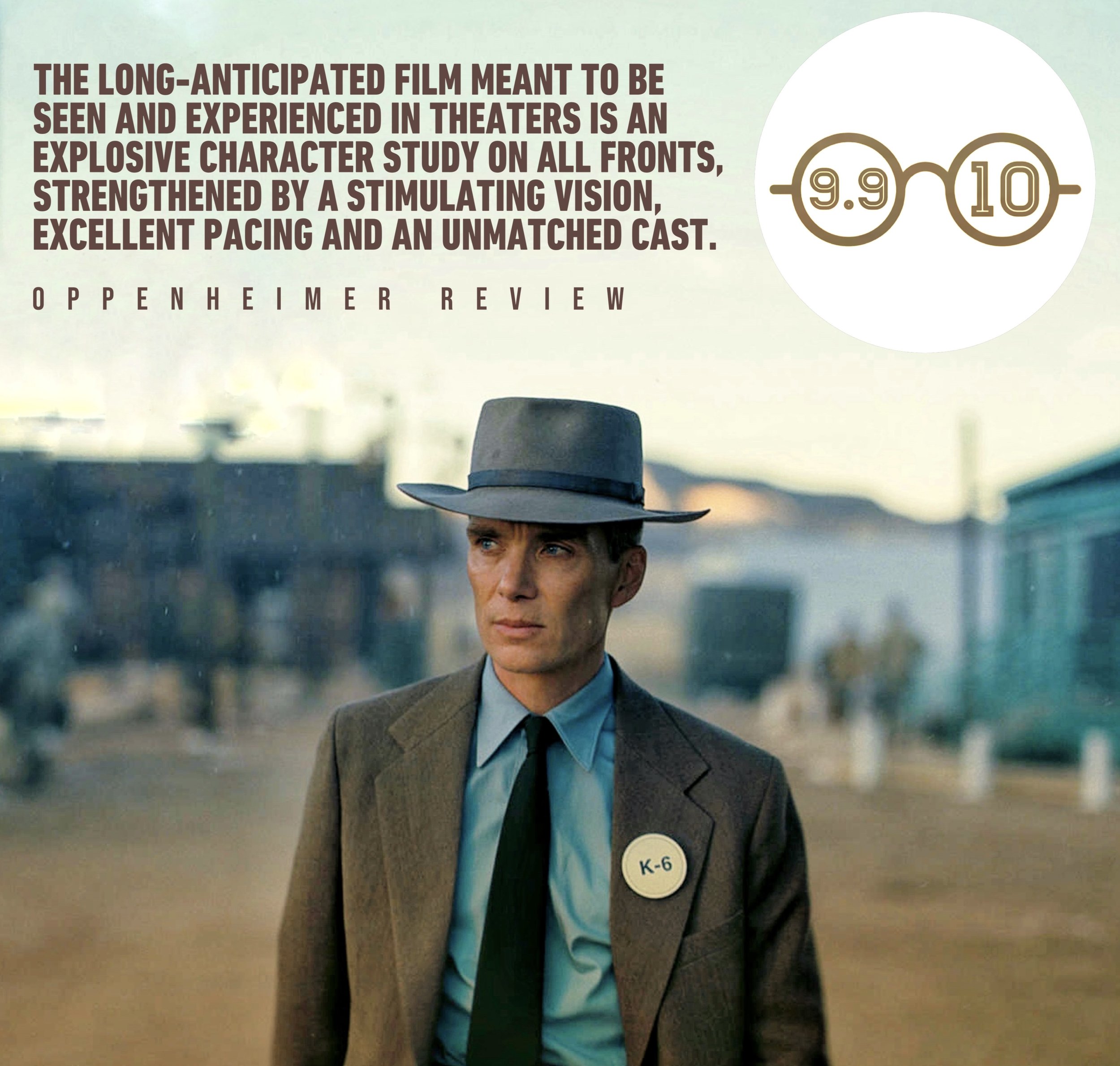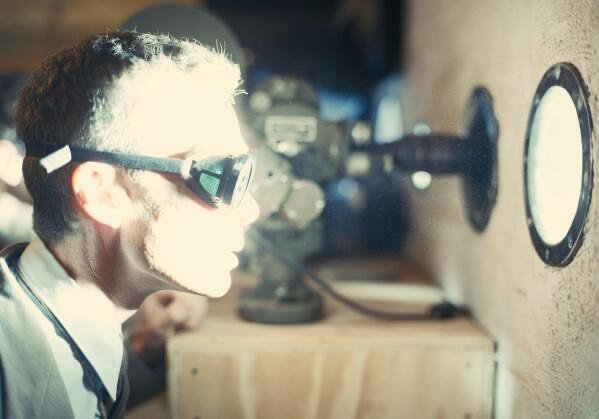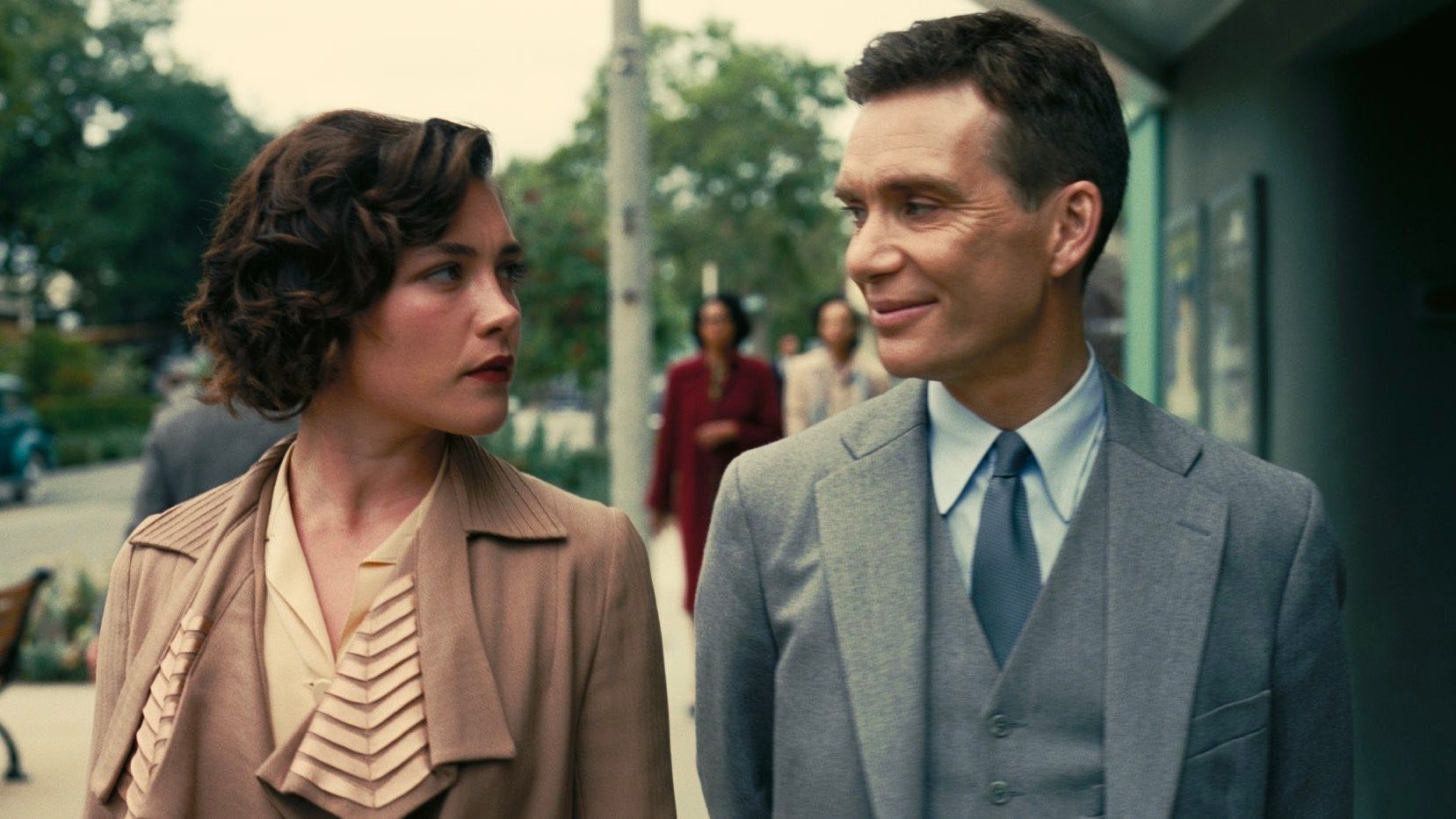Oppenheimer Review
After 25 years since his feature debut, Christopher Nolan returns with his sixth collaboration with Cillian Murphy and the first with the actor as the lead. Nolan has gotten to the point where his films, like this one, are considered motion picture events. For a long time, Nolan has been concerned with this issue; his previous picture, Tenet, had a doomsday weapon and a reference to the Manhattan Project. While Tenet appears to be one giant time-twisting riddle, Oppenheimer, despite its shifting timelines, is actually more clear-cut.
J. Robert Oppenheimer (Cillian Murphy) was called the "American Prometheus," which inspired the film's opening statement from Greek mythology, in which Prometheus stole fire from the gods and was eternally cursed for his actions. Nolan adapted his script from Kai Bird and Martin J. Sherwin's Pulitzer Prize-winning book, which chronicles the successes and tragedies of the father of the atomic bomb.
The film, in the spirit of Nolan, does not follow a chronological storyline and leaps about from different times of the protagonist's life. Jennifer Lame skillfully edits the three main acts together, connecting sequences from his college years in Europe to the two distinct hearings, and of course, the process of producing the atomic weapon itself.
This film is primarily about men in suits writing on chalkboards and discussing science and politics in various bland rooms, but there is continual suspense and a sense of impending doom in every scene. That disturbing vibe is unrelenting, with only brief respites. What appears to be a routine set of events is anything but; it's all leading up to the world's first nuclear test, code-named Trinity, on July 16, 1945.
The Trinity test was actually weakest part of ‘Oppenheimer.’ There is nothing, but respect for Nolan's use for practical effects over CGI adds realism, as we can virtually smell and feel the wind knocked out of the individuals watching the explosion, but CGI could have given it the scene a much wider shot. That would have shown the full scale of the nuke’s power.
Oppenheimer's serene, unruffled manner had vanished by the time the United States detonated two atomic bombs on Hiroshima and Nagasaki. As he takes the stage at Los Alamos, he is gravely troubled by the consequences of his creation. His terrifying hallucinations of atomic bomb victims--charred bodies, skin peeling off--are straight out of a horror film. "I am become death, the destroyer of worlds," a statement from Hindu scripture that he utters early in the film during his tryst with Jean Tatlock (fearless Florence Pugh), has become a reality.
Speaking of the tryst, Nolan isn't exactly known for overt sexuality in his films, so nudity and sex sequences in this film are unexpected. The scenes, in my opinion, humanize the people and demonstrate the complexities of their relationships. The romance between him and Tatlock, on the other hand, is quite frigid; creating warmly intimate situations is clearly not Nolan's strong strength. In a similar vein, because the majority of Nolan's work is so male-centric, his female characters frequently get the short end of the stick. He tries with feisty Kitty Oppenheimer (the always-excellent Emily Blunt). Her complicated character is much more fleshed out here, and she plays an important role in her husband's journey. I'm hoping that Nolan's future work will include more nuanced and intriguing female characters.
The whole cast is fantastic, anchored by Cillian Murphy, who gives his best leading performance ever. He's frequently cast in supporting roles in Nolan's films, but this is his moment to shine with a magnificent, captivating performance. It's a role he was born to play, and I'm confident he'll be the one to beat come Oscar season next year. Robert Downey Jr., who plays Oppenheimer's ally-turned-foe Lewis Strauss, will very certainly win an award for Best Supporting Actor, as this is by far his best post-MCU portrayal. Simply put, there are too many actors to mention, and the rotation of scientists, military officials, and politicians blends together. Among them are Benny Safdie, Rami Malek, Jason Clarke, and Alden Ehrenreich, as well as Gary Oldman and Tom Conti as Albert Einstein.
On a technical level, the film is a sensory overload. It looks excellent in an IMAX theater. Hoyte Van Hoytema created the magnificent images, which flawlessly blend black/white and color aesthetics. Wide vistas appear to be a nod to David Lean's Lawrence of Arabia. The sound design is outstanding, albeit the background music can be overly loud at times, drowning out the dialogue in a few moments. And then there's the music... from the beginning, Ludwig Göransson's violin-heavy score is omnipresent-emotive, mournful, and thunderous, perfectly fitting the film's foreboding tone.
Viewers will admire this film and what Nolan has accomplished here. You don’t have to be a science buff and largely unfamiliar with the subject matter to be intensely immersed in the film from start to finish. The three-hour running time actually flies by relatively fast.
Even if you smart folks still don’t understand fully what quantum theory is all about, you will still grasp the magnitude of what these scientists built and its impact on humanity’s future. The moral of the story is still relevant to our world today, how technological advances can often lead to our own demise if not used carefully.







